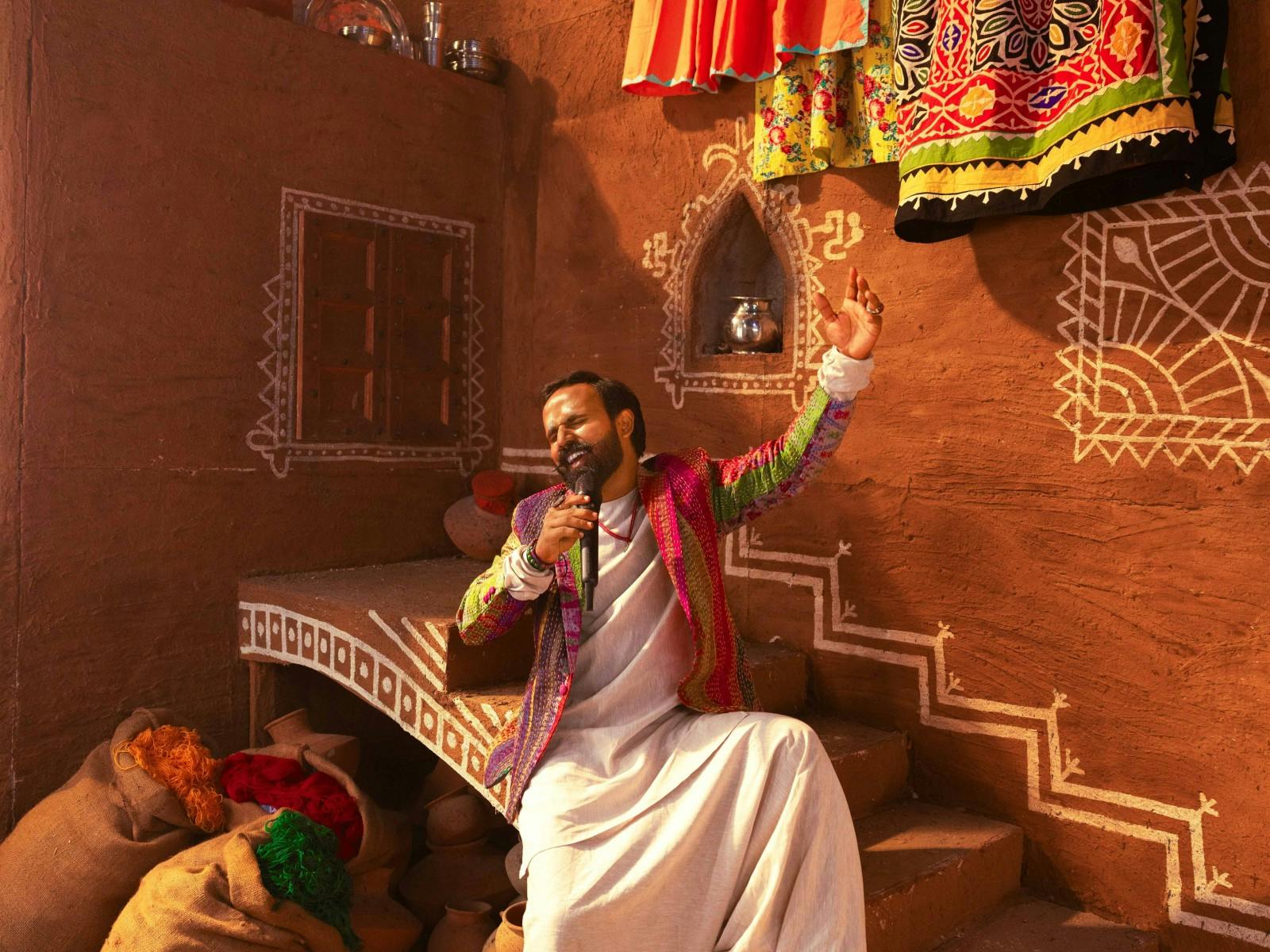Coke Studio is Pakistan’s Multicultural Reality
Many would have you believe the country is a monolith. But its most popular music says otherwise.
As women sprinkle fuschia powder into floral rangolis, and manjiras twang together, Sindhi musician Noman Ali Rajper belts: “Cha karna aa cha karno nahi, chho monki pado aaien, zor ji mehndi lundhi nahi.” What must I do and what I must not / Do not tell me / You can’t force mehndi on my hand.
On April 14, after a two-year hiatus, Coke Studio Pakistan returned for its 15th season with “Aayi Aayi.” Rajper is telling us the tale of “Umar Marvi,” a village girl whom a local king abducts to marry. Instead of acquiescing, Marvi resists. The track’s video opens with a ralli, a traditional Sindhi quilt, emblazoned with the show’s name. In Sindhi, the word “ralli” comes from “ralanna,” meaning to connect or mix, an apt metaphor for the popular television show and music franchise that many know today for its fusion of disparate styles, from qawwali and rock to Sindhi folk and rap. Since 2008, Coke Studio has offered an alternate vision of Pakistani culture, one that shines a light on its multitudes.
